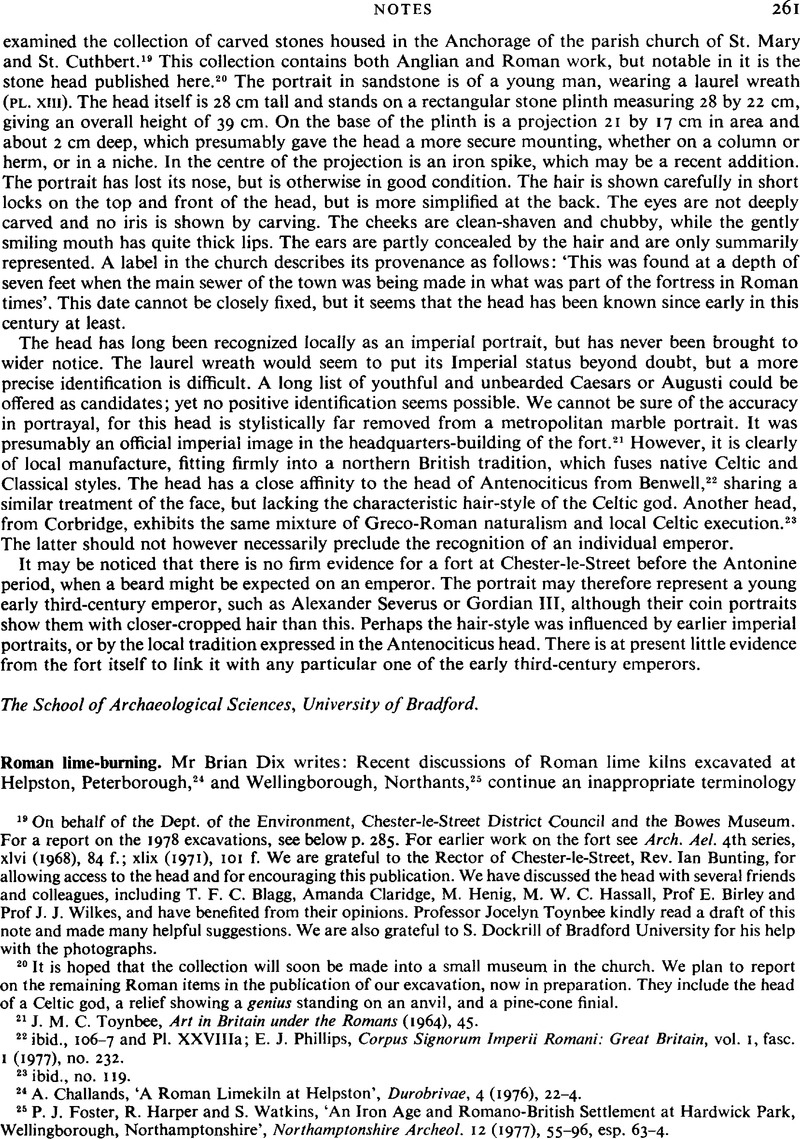Article contents
Roman lime-burning
Published online by Cambridge University Press: 09 November 2011
Abstract

- Type
- Notes
- Information
- Copyright
- Copyright © Brian Dix 1979. Exclusive Licence to Publish: The Society for the Promotion of Roman Studies
References
24 Challands, A., ‘A Roman Limekiln at Helpston’, Durobrivae, 4 (1976), 22–4.Google Scholar
25 Foster, P. J., Harper, R. and Watkins, S., ‘An Iron Age and Romano-British Settlement at Hardwick Park, Wellingborough, Northamptonshire’, Northamptonshire Archeol. 12 (1977), 55–96, esp. 63–4.Google Scholar
26 Sölter, W., Römische Kalkbrenner im Rheinland (Düsseldorf, 1970), 35–40Google Scholar; Dix, B., The Production of Lime and its Applications in the Roman World (B.A. degree dissertation, University of London, 1973), 7–8Google Scholar; Jackson, D. A, Biek, L. and Dix, B. F., ‘A Roman Lime Kiln at Weekley, Northants,’ Britannia iv (1973), 128–40CrossRefGoogle Scholar, esp. 137–8.
27 cf. Dix, op. cit. (note 26), with a fuller treatment now in preparation.
28 cf. Cato, De Agri Cultura xxxviii.
29 White, R. F., ‘A Roman Lime Kiln near Cardington Mill, Bedford’, Bedfordshire Archaeol. J. 12 (1977), 23–6.Google Scholar
30 Foster, Harper and Watkins, op. cit. (note 25), 63 and fig. 6.
31 Dix, op. cit. (note 26), 8–9.
32 cf. Jackson, Biek and Dix, op. cit. (note 26), 135.
- 4
- Cited by


